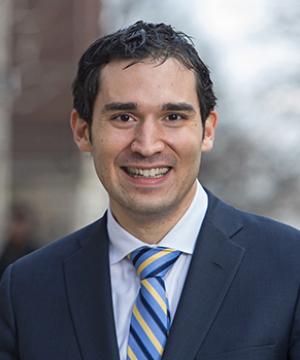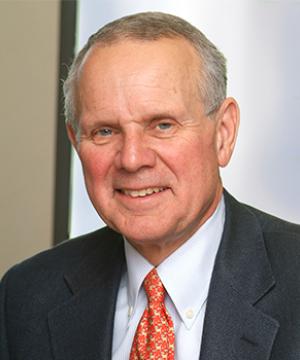Developing a New Vision for Capital Market Regulation
A conference on technology and the markets looks at the balance between innovation and regulation.
Technology that allows virtually instantaneous information and transactions is transforming capital markets. “That’s a fact,’’ says Joshua Mitts, associate professor of law at Columbia Law School. “The question is, how?’’
One way is by increasing the potential for market manipulation, according to participants at a Technology Conference held on October 4 and sponsored by the Program in the Law and Economics of Capital Markets, where Mitts is a program fellow. The conference, co-sponsored by the Financial Industry Regulatory Authority (FINRA), was part of the Capital Markets program’s New Special Study of the Securities Market, a multiyear effort to identify priorities for securities regulatory reform.
Mitts, in a paper commissioned for the conference, outlined ways in which new technology—including digital ledgers (also known as blockchain) and social media posts by short-sellers—could abet market manipulation.
“These are big areas that are driving a lot of enforcement and a lot of litigation,’’ he says. “One of the challenges we have is adapting old paradigms to new technologies.’’
On social media and websites with crowdsourced content—such as Twitter and Seeking Alpha, which covers the financial markets—short-sellers reveal negative information about companies while disclosing they have a stake in a stock; they can also then take profits and not disclose they have changed their shareholding. Mitts calls it “a pump-and-dump in reverse.’’
“If I don’t know that you’re not short anymore, I’m being misled. I’m selling and you’re already out of it,’’ he says. “That is why social media is so powerful and dangerous. That’s why it needs to be regulated—because the trading is instantaneous, but the disclosure is not.’’
Mitts suggests a requirement to disclose if a person posting about a stock changes their position in the stock, or a requirement for a delay between posting about a stock and then trading it.
“What we have today is folks who are taking positions and then rapidly trading against their readers,’’ Mitts says. In financial journalism, he adds, a publication’s ethics rules prohibit journalists from owning stocks in companies they cover, “but it’s status quo in social media.’’
Regulation vs. Innovation
Because new technologies make market manipulation easier, Mitts says the Securities and Exchange Commission (SEC) should keep a skeptical outlook. “It illustrates the challenge we face. Regulators are hesitant to come down too hard on new kinds of technological innovation. Their presumption is that people act in good faith.’’
But digital ledgers have seldom delivered on their promise, Mitts says, and the technology is so complicated that it raises the question of which investors should be considered qualified to buy them. An investor may meet the minimum net worth standard and be financially sophisticated, yet know little of the technology behind initial coin offerings.
“One of the shocking facts is just how little digital assets have delivered relative to what they promised. It reeks of fraud,’’ Mitts says. That danger calls for a balance between regulation and innovation. “You should have a cautious regulator asking tough questions. I personally think that the SEC is not aggressive enough.’’ Otherwise, Mitts adds, investors suffer. “A lot of that innovation has been the source of a lot of pain for a lot of people.’’
An Agenda-Setting Study
The Capital Markets program is engaged in a multiyear New Special Study of the Securities Market. The original special study, commissioned by Congress and executed by the SEC, came out in 1963. “It helped set an agenda for the next few decades,’’ says Merritt B. Fox, the Michael E. Patterson Professor of Law and co-director of the Capital Markets program. “It helped people think about the whole market, how different parts fit together, and how a change in one place could affect another thing.’’
Recently, with the rapid changes in technology and the markets, regulation by the SEC and Congress has been more reactive, and so a new long-term vision is needed, Fox says. For instance, the reach of online communication and trading has made more attractive non-public securities offerings (or private placements) simply because “it’s easier for buyers and sellers to find each other even without a public market for the securities.’’ But that raises regulatory issues, “because all of the rules were formed on the assumption that trading would not be easy to do,’’ adds Fox.
Private placements, unlike an initial public offering, are not required to register with the SEC, and can only be sold to investors who meet a net worth threshold. As the amount of money raised through private placements now far exceeds the value of IPOs, Fox asks if there is “a social interest in having some kind of mandatory disclosure requirements for those companies.’’
The New Special Study is guided by a steering committee made up of prominent securities markets practitioners and scholars, including Columbia Law’s Zohar Goshen and John C. Coffee Jr. It has hosted two previous conferences, commissioned papers (including the one by Mitts), and produced a book, Securities Market Issues for the 21st Century.
Next, Fox says, the special study will conduct a survey of stakeholders—including CEOs, investment bankers, exchange operators, regulators, and venture capitalists—to ask them to identify what they think are the most important issues in securities regulation or deregulation.
The Program in the Law and Economics of the Capital Markets is a joint effort of Columbia Law School and Columbia Business School.
# # #
Published on November 22, 2019

